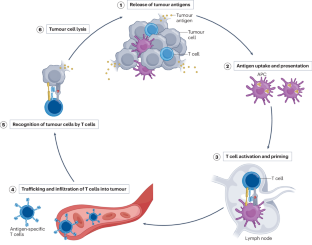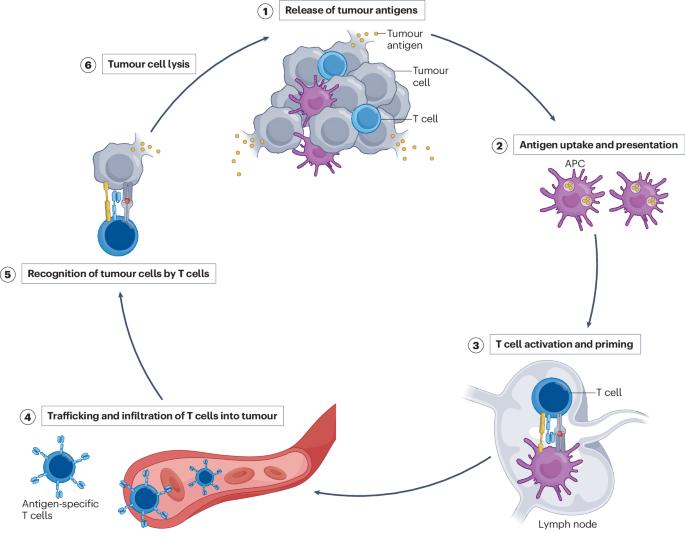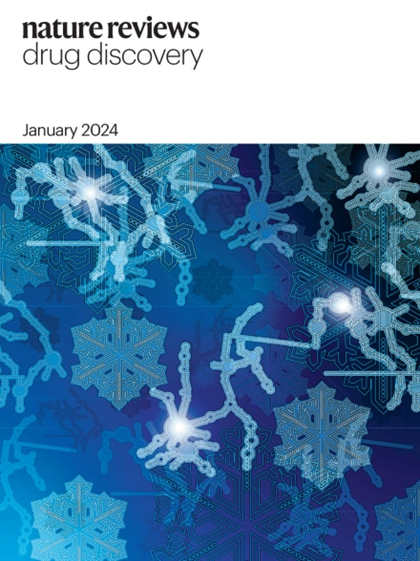利用输送技术增强原位癌症疫苗。
IF 101.8
1区 医学
Q1 BIOTECHNOLOGY & APPLIED MICROBIOLOGY
引用次数: 0
摘要
癌症原位疫苗接种是指利用肿瘤部位的肿瘤抗原诱导肿瘤特异性适应性免疫反应的任何方法。这些方法在治疗许多实体瘤方面大有可为,许多候选药物正在进行临床前或临床评估,还有一些产品已经获得批准。然而,开发有效的原位癌症疫苗也面临着挑战。例如,肿瘤细胞对肿瘤抗原的释放不足限制了免疫细胞对抗原的吸收;抗原递呈细胞对抗原的处理不足限制了抗原特异性 T 细胞反应的产生;肿瘤的抑制性免疫微环境导致效应细胞衰竭和死亡。合理设计的递送技术,如脂质纳米颗粒、水凝胶、支架和聚合物纳米颗粒,通过向肿瘤细胞、免疫细胞或细胞外基质靶向递送治疗药物,是克服这些挑战的独特方法。在此,我们将讨论有可能减少原位癌症疫苗各种临床障碍的递送技术。我们还将对这一处于癌症疫苗生物学和递送技术交界处的新兴领域提出自己的看法。本文章由计算机程序翻译,如有差异,请以英文原文为准。


Enhancing in situ cancer vaccines using delivery technologies
In situ cancer vaccination refers to any approach that exploits tumour antigens available at a tumour site to induce tumour-specific adaptive immune responses. These approaches hold great promise for the treatment of many solid tumours, with numerous candidate drugs under preclinical or clinical evaluation and several products already approved. However, there are challenges in the development of effective in situ cancer vaccines. For example, inadequate release of tumour antigens from tumour cells limits antigen uptake by immune cells; insufficient antigen processing by antigen-presenting cells restricts the generation of antigen-specific T cell responses; and the suppressive immune microenvironment of the tumour leads to exhaustion and death of effector cells. Rationally designed delivery technologies such as lipid nanoparticles, hydrogels, scaffolds and polymeric nanoparticles are uniquely suited to overcome these challenges through the targeted delivery of therapeutics to tumour cells, immune cells or the extracellular matrix. Here, we discuss delivery technologies that have the potential to reduce various clinical barriers for in situ cancer vaccines. We also provide our perspective on this emerging field that lies at the interface of cancer vaccine biology and delivery technologies. In situ cancer vaccines generate tumour-specific T cell responses and hold promise for the treatment of solid tumours. This Review discusses drug delivery technologies such as lipid nanoparticles, hydrogels and scaffolds that are being developed to boost the antitumour immune effects of several types of in situ cancer vaccine.
求助全文
通过发布文献求助,成功后即可免费获取论文全文。
去求助
来源期刊

Nature Reviews. Drug Discovery
医学-生物工程与应用微生物
CiteScore
137.40
自引率
0.30%
发文量
227
期刊介绍:
Nature Reviews Drug Discovery is a monthly journal aimed at everyone working in the drug discovery and development arena.
Each issue includes:
Highest-quality reviews and perspectives covering a broad scope.
News stories investigating the hottest topics in drug discovery.
Timely summaries of key primary research papers.
Concise updates on the latest advances in areas such as new drug approvals, patent law, and emerging industry trends and strategies.
 求助内容:
求助内容: 应助结果提醒方式:
应助结果提醒方式:


